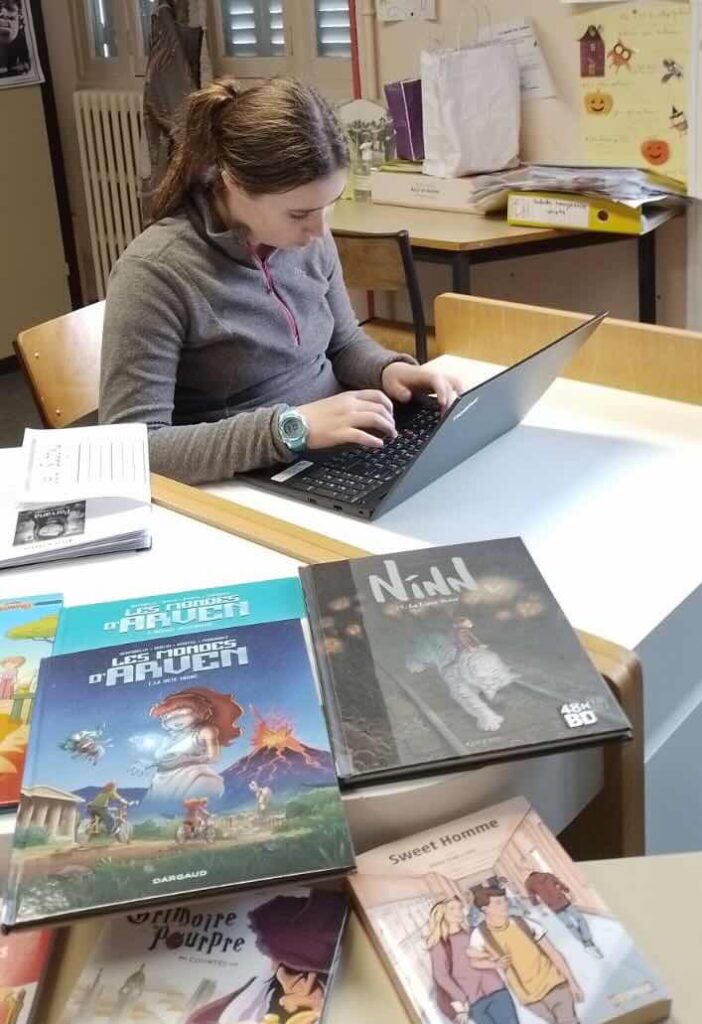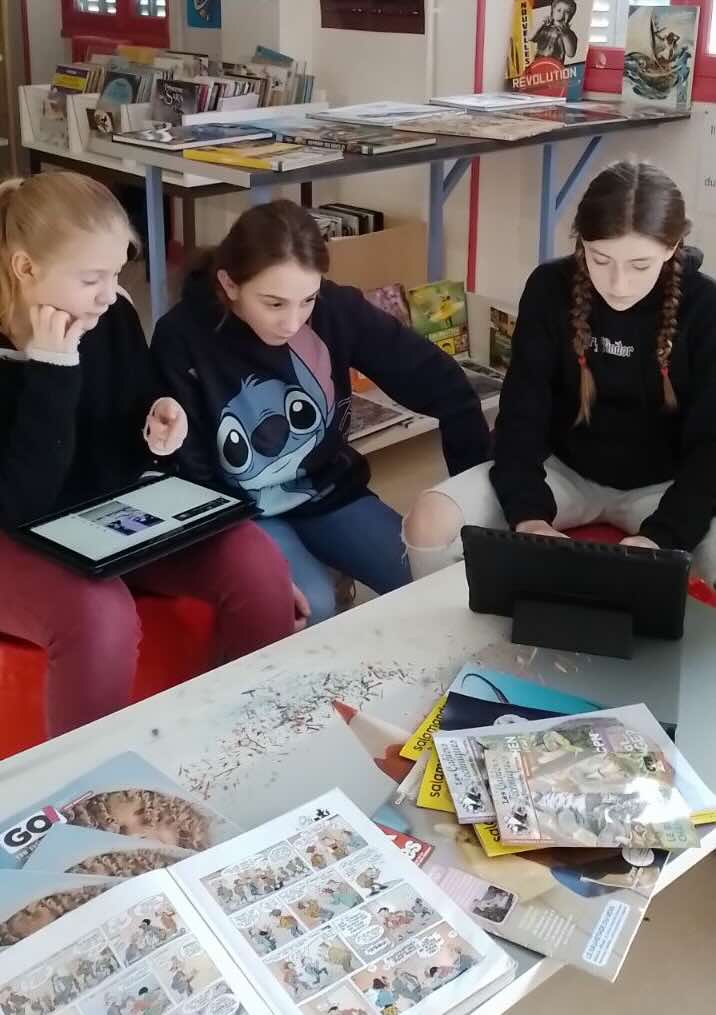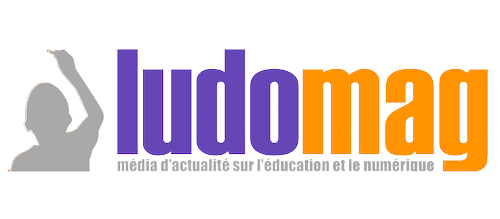There are small territories nestled in the heart of rural France where one might think that « not much » happens and that everything is « simpler » because it is less densely populated. Don’t believe these shortcuts! For the department of Cantal, engaging in a reflection on digital education has been a current topic for 7 years, as Nathalie Lacroix, in charge of Digital Education at the Departmental Council of Cantal, explains.
Today, the community is considering the CDI (Information and Documentation Center) of tomorrow to better understand learning spaces and times.
Clearing away the « basic » issues before engaging in new uses.
Its story naturally brings to mind other communities that also constantly question the investments they have made and need to make in colleges.
Today, after leveling up and equipping plans of all kinds, it is time to think about the advantages that digital technology can bring more globally: how to organize spaces, how to think about learning times using different available resources, how to better engage middle school students, in a way.
Since 2017, the Department has taken over the maintenance and equipment responsibility in colleges, « to increasingly intervene in this area for the 22 public colleges in Cantal, » explains Nathalie Lacroix.
« This specific positioning allows for support of usage but especially for installing equipment in line with the needs identified in the establishments » she continues.
A framework was established in 2018-2019, the « Departmental Scheme for Digital Education, » which allows for intervention in establishments in a « phased » manner, « because before getting to usage, we had to go back to basics » she specifies.
By « basics, » she means things like wiring, securing the information system, renewing physical servers, and then a final phase with the implementation of a foundation, « defined in a digital education working group, composed of representatives from the national education and representatives of the community » she emphasizes.
This group defined what the basic equipment in a college was.
Today, this foundation consists of desktop computers, mobile classes in laptop format, and interactive digital screens.
Why the « CDI of tomorrow »?
In parallel to this, there is a focus on « innovations and experiments, » and it is within this axis that the experimentation we are particularly interested in today takes place, namely the « CDI of tomorrow, » by rethinking space, time, and resources at the Riom-ès-Montagne college.
Some time ago, this college had already responded to a call for projects, wanting to equip itself with e-readers. The project was carried out but « it gave us a rather mixed response, » as Nathalie Lacroix explains, « as it did not trigger any particular appetite for reading or even for digital technology. »
At the time, the e-reader project relied on an online resource for which the college had not been able to obtain funding.
Nevertheless, the motivated and determined school librarian, intrigued by the potential uses of these e-readers, conducted several reflections, including work with students with special educational needs, such as dyslexic students, for example. Through exchanges between teaching teams, the head of the institution, and the Digital Mission of CD15, the project finally led to an experimentation around the « CDI of tomorrow. »
« As part of the departmental scheme as well, our teams felt that they should draw inspiration from these uses to conduct an experiment both on the resource and on questioning the CDI of tomorrow » explains Nathalie Lacroix.
The college is thus engaged in experimentation to work on both the physical space of the CDI and the present terminals as well as the « virtual » spaces, meaning the resources.
For this three-year experiment, the Department has subscribed to the Sondo resource.

This experimentation is currently underway at the CDI of the Riom-ès-Montagne college, a small rural establishment in the heart of Cantal with 113 students; however, this reflection should be considered more globally, on the scale of an entire establishment where the installations of all classrooms, equipment, and resources used by discipline are rethought, etc.
The CDI of the Riom-ès-Montagne college is just a first step in a long process, like the « guinea pig » of this experimentation, but a « happy » one.
« For now, we are not on an extravagant project; it only concerns one establishment, and we have committed to the resource for three years so that teachers have time to appropriate it well.«
Creating a connection between physical spaces and virtual spaces to enhance learning
With this Sondo resource, Nathalie Lacroix hopes that a link will be established between virtual shelves and physical shelves. « The goal is not necessarily to have students read only on digital devices but to reconnect with reading » she adds.
« So, we are reflecting in the CDI but not only there. We are also working within the establishment and outside the establishment, especially with this Sondo resource, available via the students’ ENT (Digital Work Environment); we are considering providing an offline version, for travel times, for example. » explains Nathalie Lacroix.
In addition to this resource, there is also a consideration of the diversity of terminals available in the CDI. Today, the student has the choice between a desktop computer, a laptop, or a tablet; the school librarian will be able to advise based on the task the student wants to accomplish.
« When a student comes to the CDI, the school librarian can, after an exchange with the student, guide them towards a type of terminal.«
If it’s a group project, the student can settle in the designated area with a laptop; if the student just wants to do some light reading, they can sit on the sofa with a tablet.

Engaging with and utilizing resources is something quite new for the community. Apart from the Digital Work Environment, which has been in place since 2006, « the acquisition of a specific digital resource for middle school, integrated within a classroom of the middle school, namely the CDI, is a first » she adds.
This raises several questions that will need to be analyzed: « Is this sufficient? Should we go further? Can other teachers make use of it?…«
Beyond the use of the Sondo resource within the CDI, the indicators that interest Nathalie and the community are to understand how the resource will be used outside the establishment; does it encourage students to read more and thus, for example, revisit the territory’s media library, which is just a stone’s throw from the college… In short, to know if the experimentation conducted within the establishment extends beyond its walls in some way.
« It’s not for the immediate future, but it can guide our future reflections » she concludes.








